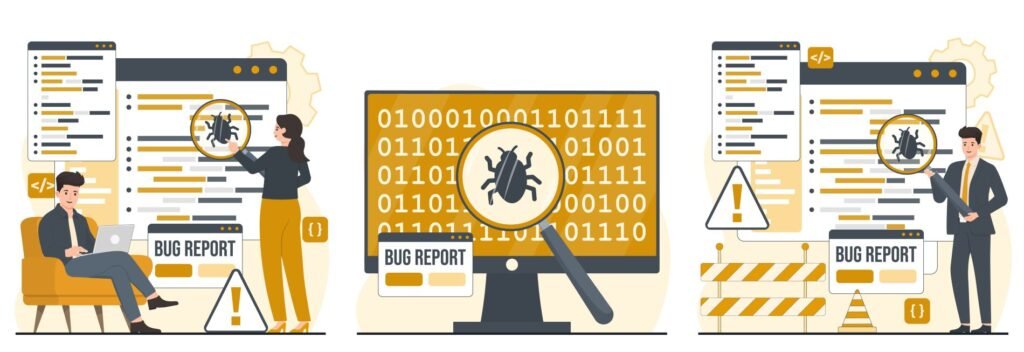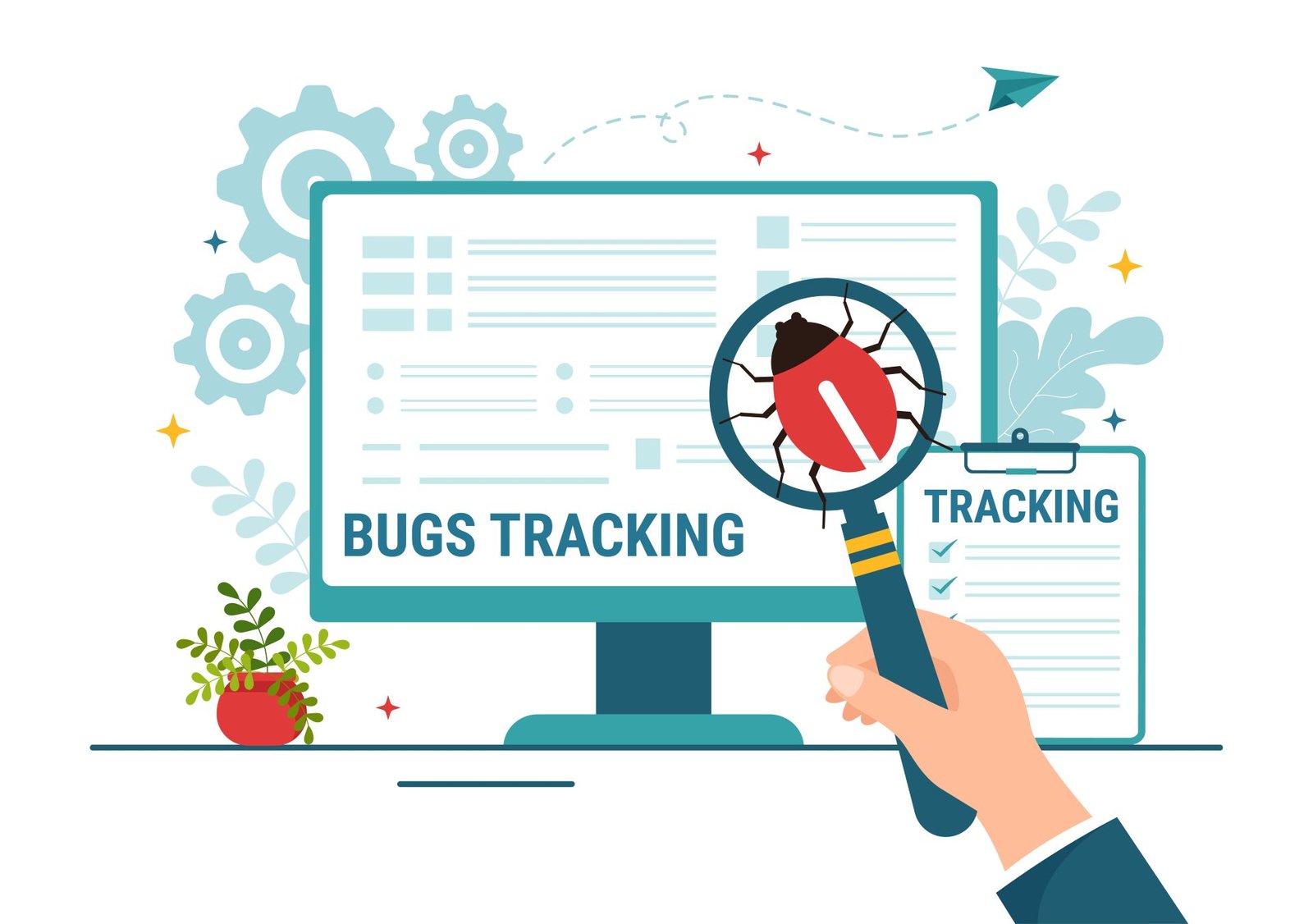In the dynamic realm of software development, delivering flawless applications is a universal goal. Bugs—those pesky defects that disrupt functionality—can derail even the most promising projects. This is where bug tracking tools shine, serving as the backbone for identifying, prioritizing, and resolving issues efficiently. These tools empower development teams to maintain high standards, streamline workflows, and ensure end-user satisfaction. Among the leading options, JIRA, developed by Atlassian, is celebrated for its versatility, while Bugzilla, Mozilla’s open-source gem, excels in focused defect management.
Other contenders, such as Redmine, YouTrack, Trello, and GitHub Issues, bring unique strengths to the table, catering to diverse needs. Choosing the right bug tracking tool can transform a team’s productivity, but with so many options, the decision isn’t always straightforward. This article dives deep into JIRA, Bugzilla, and other notable tools, comparing their features, strengths, and weaknesses to guide you toward the perfect fit for your team.
On This Page
Table of Contents
1. What Are Bug Tracking Tools and Why Do They Matter?
Bug tracking tools are specialized software designed to log, manage, and monitor defects throughout the software development lifecycle. They act as centralized hubs where developers, testers, and project managers collaborate to resolve issues, ensuring nothing slips through the cracks. Beyond fixing bugs, these tools enhance team communication, provide analytics for process improvement, and maintain a clear audit trail.
Why are they critical? Imagine a mobile app launch delayed because a critical bug went unnoticed. A bug tracking tool could have flagged it early, saving time and resources. For example, a startup building an e-commerce platform might use a tool to track checkout errors, ensuring a seamless user experience before going live.
- Key Benefits:
- Improved collaboration across teams.
- Faster bug resolution through prioritization.
- Enhanced product quality by catching defects early.
- Data-driven insights via reporting and dashboards.
By adopting the right tool, teams can transform chaotic workflows into structured, efficient processes, delivering robust software that stands the test of user expectations.
2. JIRA: The All-in-One Project Management Powerhouse
JIRA, created by Atlassian, is a juggernaut in project management and bug tracking. Originally designed for issue tracking, it has evolved into a comprehensive platform supporting agile methodologies like Scrum and Kanban. Its flexibility makes it a favorite among enterprises and startups alike.
Features
- Customizable Workflows: Tailor processes to match team needs, from bug reporting to resolution.
- Agile Boards: Visualize tasks with Scrum or Kanban boards.
- Integrations: Connects with tools like Confluence, Bitbucket, and Slack.
- Reporting Tools: Generate burndown charts, velocity reports, and more.
Strengths
- Scalability: Handles teams of 10 to 10,000 with ease.
- Versatility: Supports bug tracking, project management, and service desk functions.
- User-Friendly: Intuitive interface reduces onboarding time.
Weaknesses
- Cost: Subscription plans can be pricey for small teams.
- Complexity: Overwhelming for simple bug tracking needs.
- Learning Curve: Advanced features require training.
Best For
JIRA excels for agile teams and organizations needing a robust, all-in-one solution. For instance, a gaming company developing a multiplayer title might use JIRA to track bugs, manage sprints, and integrate with GitHub for seamless code reviews.
Example: A fintech firm used JIRA to streamline its release cycle. By creating custom workflows for bug prioritization, they reduced critical defects by 30% before launching a payment app.
3. Bugzilla: The Open-Source Bug Tracking Veteran
Bugzilla, launched by Mozilla in 1998, is a stalwart in bug tracking. As an open-source tool, it’s free and highly customizable, making it a go-to for budget-conscious teams and open-source projects.
Features
- Advanced Search: Query bugs with granular filters (e.g., status, severity).
- Custom Fields: Add fields like “browser type” for detailed reporting.
- Email Notifications: Keep teams updated on bug status changes.
- REST API: Integrate with external tools for automation.
Strengths
- Cost-Free: No licensing fees, ideal for startups.
- Customizability: Modify code to fit specific workflows.
- Reliability: Proven track record in projects like Firefox.
Weaknesses
- Outdated Interface: Lacks the polish of modern tools.
- Steep Learning Curve: Requires technical expertise for setup.
- Limited Scope: Focused solely on bug tracking, not project management.
Best For
Bugzilla suits open-source communities, small teams, or organizations prioritizing cost over aesthetics. For example, a nonprofit developing a community app might use Bugzilla to track bugs without incurring subscription costs.
Example: A university research team used Bugzilla to manage defects in a data analysis tool. Its advanced search helped them isolate issues tied to specific datasets, speeding up resolution.
4. Other Notable Bug Tracking Tools
Beyond JIRA and Bugzilla, several tools offer compelling alternatives, each with distinct flavors to suit different workflows.
Redmine
- Overview: Open-source, with bug tracking and basic project management.
- Strengths: Free, flexible, supports multiple projects.
- Weaknesses: Basic interface, requires self-hosting expertise.
- Best For: Small businesses needing lightweight solutions.
YouTrack
- Overview: Developer-friendly, with time tracking and a modern UI.
- Strengths: Agile boards, customizable dashboards, affordable pricing.
- Weaknesses: Limited enterprise features compared to JIRA.
- Best For: Mid-sized teams valuing usability.
Trello
- Overview: Card-based tool for simple bug tracking and task management.
- Strengths: Visual, intuitive, free tier available.
- Weaknesses: Lacks advanced bug tracking features like JIRA or Bugzilla.
- Best For: Freelancers or startups with basic needs.
GitHub Issues
- Overview: Integrated with GitHub repositories for code-centric tracking.
- Strengths: Seamless for developers, free for public projects.
- Weaknesses: Limited for non-coding teams, basic reporting.
- Best For: Developer teams tied to GitHub.
Example: A freelance developer used Trello to track bugs for a client’s website redesign, leveraging its drag-and-drop boards to prioritize tasks visually. Meanwhile, a SaaS startup chose GitHub Issues to align bug tracking with their codebase, streamlining commits and fixes.
5. Key Features to Look for in Bug Tracking Tools
When evaluating bug tracking tools, focus on features that align with your team’s workflow. Here’s what to prioritize:
- Issue Reporting: Easy bug submission with fields for severity, screenshots, and logs.
- Prioritization: Tools to rank bugs (e.g., critical, low) for efficient resolution.
- Automation: Rules to assign bugs or update statuses (e.g., JIRA’s automation engine).
- Integrations: Compatibility with CI/CD pipelines, chat apps, or repositories.
- Reporting: Dashboards for tracking progress and identifying bottlenecks.
- Usability: Intuitive interfaces to minimize training time.
For example, a tool with automation can auto-assign critical bugs to senior developers, saving manual effort. Scalability matters too—JIRA grows with enterprises, while Trello suits solo projects.
6. Comparing JIRA, Bugzilla, and Others: A Side-by-Side Analysis
Here’s a detailed comparison to highlight how JIRA, Bugzilla, and others stack up:
| Tool | Cost | Ease of Use | Customization | Integrations | Best For |
|---|---|---|---|---|---|
| JIRA | Subscription-based | High | Extensive | GitHub, Slack, Confluence | Agile teams, enterprises |
| Bugzilla | Free (open-source) | Moderate | High | Limited, API-based | Open-source, small teams |
| Redmine | Free (self-hosted) | Moderate | Moderate | Plugins available | Small businesses |
| YouTrack | Free tier, paid plans | High | High | Git, Jenkins | Mid-sized teams |
| Trello | Free tier, paid upgrades | Very High | Low | Slack, Google Drive | Freelancers, startups |
| GitHub Issues | Free for public repos | High | Moderate | GitHub ecosystem | Developer teams |
- JIRA shines for complex projects requiring agile workflows and deep integrations.
- Bugzilla is ideal for technical teams comfortable with customization and minimal costs.
- Trello and GitHub Issues cater to simpler or developer-focused needs, respectively.
Example: A mid-sized agency tested YouTrack and JIRA. They chose YouTrack for its lower cost and developer-friendly boards, which suited their 20-person team better than JIRA’s enterprise-grade complexity.
7. Choosing the Right Tool for Your Team
Selecting a bug tracking tool hinges on your team’s unique needs. Consider these factors:
- Budget: Free tools like Bugzilla or Redmine vs. paid options like JIRA.
- Team Size: Trello for solo devs, JIRA for large enterprises.
- Expertise: Technical teams can handle Bugzilla; non-technical prefer Trello.
- Workflow: Agile teams need JIRA or YouTrack; traditional teams may opt for Redmine.
Tips for Evaluation:
- Test free trials to assess usability.
- Check community forums or X posts for user feedback.
- Involve your team to ensure buy-in.
For instance, a startup with five developers might pick GitHub Issues for its integration with their codebase, while a 100-person company chooses JIRA for its reporting and scalability.
WrapUP
Navigating the world of bug tracking tools can feel daunting, but the right choice can revolutionize your software development process. JIRA stands tall for its all-encompassing project management capabilities, making it a top pick for agile teams and enterprises tackling complex projects. Bugzilla, with its open-source roots, remains a reliable, cost-free option for focused bug tracking, especially in resource-constrained settings.
Alternatives like Redmine, YouTrack, Trello, and GitHub Issues offer tailored solutions, whether you prioritize simplicity, developer integration, or affordability. By weighing factors like cost, usability, and team needs, you can pinpoint a tool that not only catches bugs but also fuels collaboration and efficiency. In the end, the best bug tracking tool is one that feels like an extension of your team, empowering you to deliver exceptional software with confidence.

FAQs
What exactly is a bug tracking tool, and why should I care?
A bug tracking tool is software that helps teams spot, record, and fix problems (or “bugs”) in their apps or websites. Think of it like a to-do list for issues that need solving to make your product work smoothly. You should care because these tools keep things organized, save time, and help make sure your users get a great experience without annoying glitches.
How is JIRA different from Bugzilla?
JIRA is like a Swiss Army knife—it does bug tracking, project planning, and tons of other stuff, with a modern look and lots of add-ons. It’s great for big teams or those using agile methods, but it costs money. Bugzilla is simpler, focusing only on tracking bugs. It’s free, open-source, and loved by smaller teams or projects that don’t need fancy extras, though it looks a bit old-school.
Are there free bug tracking tools, or do they all cost money?
Plenty of bug tracking tools are free! Bugzilla and Redmine are open-source, meaning no cost but you might need some tech skills to set them up. Trello and GitHub Issues have free versions too, perfect for small projects. Paid tools like JIRA or YouTrack offer free trials or limited free plans, so you can test them before deciding.
Can a small team use JIRA, or is it just for big companies?
JIRA works for small teams, but it might feel like overkill. It’s packed with features, which is awesome if you want to grow or manage complex projects, but it can be pricey and take time to learn. Small teams might prefer something lighter like Trello for simple tasks or Bugzilla if they’re on a budget and just need bug tracking.
Can these tools work with other apps my team uses?
Most bug tracking tools play nice with other apps. JIRA connects with tons of tools like Slack, GitHub, or Google Drive to keep everything in sync. Bugzilla has fewer built-in connections but can link up using its API if you’re tech-savvy. GitHub Issues is perfect if you’re already on GitHub, and YouTrack hooks up with coding tools like Git. Check what apps your team uses to pick the best match.
How do I choose the right tool for my team?
Think about what your team needs:
Budget: Free like Bugzilla, or can you pay for JIRA?
Size: Just a few people? Try Trello. Big group? Maybe JIRA.
Skills: Tech-savvy? Bugzilla works. Not so much? Go for YouTrack.
Goals: Need project planning too? JIRA or Redmine. Just bugs? GitHub Issues.
Test a few with free trials, ask your team what feels right, and check online reviews to see what others say.
Can bug tracking tools help with things besides bugs?
Yup! Many tools go beyond bugs. JIRA lets you plan projects, track tasks, and even manage customer support tickets. Redmine and YouTrack handle bugs and project to-dos, like deadlines or milestones. Trello is great for organizing any kind of task, from bugs to marketing ideas. Bugzilla sticks mostly to bugs, but others give you more flexibility.
What if my team doesn’t like the tool we pick?
It happens! If your team isn’t clicking with a tool, don’t stress. Most tools have free trials, so you can switch without losing money. Try something different—maybe swap JIRA’s complexity for Trello’s simplicity, or Bugzilla’s old-school vibe for YouTrack’s modern feel. Get feedback from your team to figure out what’s not working and find a better fit.









